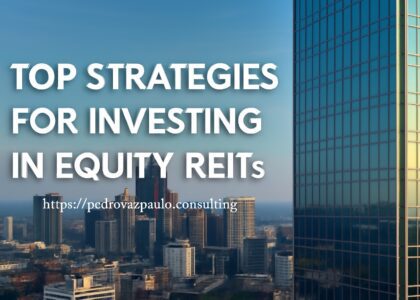Investing in real estate is one of the most lucrative ways to build wealth. But it’s not just about buying any property—success hinges on understanding the various real estate investment types. Specifically, the debate between commercial real estate and residential real estate often arises for new and seasoned investors alike. Each offers distinct advantages, risks, and opportunities. The key is understanding which type aligns with your investment goals, financial situation, and risk tolerance.
In this guide, we’ll dive deep into the pros and cons of commercial vs. residential real estate to help you make informed decisions on your investment journey. From understanding market trends to evaluating cash flow, property appreciation, and financing options, we’ll explore everything you need to know.
1. Key Differences Between Commercial and Residential Real Estate Investments
Understanding the differences between commercial and residential real estate investments is the first step in selecting the right option for your portfolio. These property types have unique characteristics in terms of market conditions, financing options, and risk profiles.
1.1 Understanding Commercial Real Estate
Commercial real estate refers to properties used for business purposes, such as office buildings, retail spaces, industrial warehouses, and mixed-use developments. These properties are typically leased to businesses, government agencies, or other commercial entities.
Types of Commercial Properties
Commercial properties come in various forms:
- Office buildings: These can be single-tenant or multi-tenant buildings used for business operations.
- Retail spaces: Shopping centers, stores, or malls.
- Industrial properties: Warehouses or factories.
- Mixed-use properties: Combine residential, office, and retail spaces in a single development.
Investment Potential
Commercial real estate generally provides higher returns compared to residential properties, particularly in prime urban locations or high-demand sectors like office space in business districts or retail properties in bustling shopping areas. The long-term leases in commercial properties, often lasting several years, provide stable cash flow over time, which can be attractive to investors seeking passive income.
Risks and Complexity
While the potential for returns is higher, the complexity and risks associated with commercial real estate are also more significant. The capital requirements are generally larger, and financing options can be more complex. Furthermore, vacancy rates in commercial properties can have a more substantial financial impact. If a business tenant vacates a space, it can take longer to find a new tenant, particularly in times of economic downturn.
For those looking to build wealth through long-term real estate investment strategies, resources like Pedrovazpaulo Real Estate Investment Strategies provide proven approaches for success in both commercial and residential real estate.
1.2 Understanding Residential Real Estate
In contrast, residential real estate refers to properties designed for living purposes, such as single-family homes, multi-family units, townhouses, and condominiums. These properties are rented out to individuals or families.
Types of Residential Properties
Residential properties include:
- Single-family homes: Detached homes rented to individuals or families.
- Multi-family homes: Duplexes, triplexes, and apartment buildings with multiple units that can be rented out separately.
- Condos and townhouses: These can be individual units in a larger building or community.
Investment Potential
Residential real estate investments are often seen as lower risk than commercial properties. There is always a demand for housing, and residential properties tend to have more stable rental income compared to commercial spaces. They’re also easier to finance, with options like FHA loans and conventional mortgages.
However, cash flow tends to be lower than commercial properties, as rental income may not cover the full cost of the property as quickly. That said, multi-family properties in high-demand areas can offer strong returns through rental income and the opportunity for long-term appreciation.
For beginners exploring ways to enter real estate, How to Choose Profitable Real Estate Investments offers actionable tips for selecting properties that can maximize your financial return.
Risks and Simplicity
For beginners, residential real estate tends to be more manageable and easier to enter, as the market is generally more liquid, and tenant turnover is more predictable. However, the risks involve dealing with issues like tenant defaults, maintenance costs, and vacancies, particularly in single-family homes.
2. Key Factors Influencing Profitability in Both Commercial and Residential Real Estate
Choosing the right property depends on several key factors, including cash flow, property appreciation, and financing options. Understanding how these factors play out in commercial versus residential real estate investments is crucial for making profitable decisions.
2.1 Cash Flow vs. Capital Appreciation
Cash flow and capital appreciation are two important metrics for assessing profitability. Both commercial and residential properties offer potential in these areas, but they function differently.
Cash Flow
- Commercial real estate often offers stable cash flow through long-term leases with businesses. These leases are typically triple net leases (NNN), meaning tenants are responsible for property expenses like taxes and maintenance, reducing the investor’s operational costs.
- In residential real estate, cash flow is dependent on rental income, with multi-family properties generally providing higher cash flow potential due to multiple units generating rent. However, vacancy rates can affect cash flow, especially in single-family homes.
Capital Appreciation
- Commercial properties typically experience higher volatility in appreciation, which can result in significant gains or losses based on market conditions. For example, demand for office space or retail spaces can dramatically shift during periods of economic growth or decline.
- Residential real estate, on the other hand, tends to appreciate more steadily, particularly in growing metropolitan areas or suburban communities where demand for housing remains strong. Single-family homes often see gradual value increases, especially when held long-term.
If you’re looking to leverage both cash flow and capital appreciation, you might be interested in How to Implement BRRRR Method Successfull, which discusses a strategy perfect for maximizing profits in both areas.
2.2 Financing Options for Commercial vs. Residential Investments
Financing is one of the major differences between commercial and residential real estate. These two types of properties have different lending requirements, which can influence your investment decisions.
Commercial Real Estate Financing
Commercial real estate requires larger down payments and more complex financing options. Lenders typically require a 20%-30% down payment, and the terms of the loans are often shorter, requiring a quicker repayment period. Financing options include commercial mortgages, hard money loans, and private equity investments, which can be more difficult to secure compared to residential loans.
Residential Real Estate Financing
Financing for residential real estate is often more accessible. With options like FHA loans, VA loans, and conventional loans, the down payment requirements are usually much lower—often between 3.5% and 20%. Residential real estate loans typically come with longer repayment periods (30 years) and lower interest rates, making them more attractive for beginner investors.
For a more comprehensive guide on financing your real estate investments, check out Comprehensive Guide to Real Estate Investment Strategies
3. Risk Factors: Managing Commercial and Residential Investments
Understanding and managing the risks associated with commercial and residential real estate is vital for successful investments. While both types offer opportunities, they come with distinct challenges.
3.1 Risks in Commercial Real Estate
Commercial properties tend to face higher risks compared to residential properties.
Tenant Risk and Lease Terms
In commercial real estate, tenants usually sign long-term leases, but if a tenant defaults or leaves, it can take months or years to secure a new one. This results in a longer vacancy period, which can hurt cash flow. Additionally, the failure of one tenant can cause a significant impact on overall rental income.
Economic and Market Risk
Commercial properties are more sensitive to economic conditions. Economic downturns can lead to higher vacancy rates, reduced demand for office space, and shifting market conditions that affect the profitability of the property.
3.2 Risks in Residential Real Estate
Tenant Risk and Vacancy
While residential properties offer more stable demand, the risk of tenant turnover and vacancies is still present. High turnover rates can increase maintenance costs and reduce cash flow, especially if vacancies remain unfilled for extended periods.
Property Value and Local Economic Conditions
Residential properties are also affected by the local economy. If the local job market declines or housing demand wanes, property values and rental income could suffer. However, residential properties tend to be more stable in well-established markets compared to commercial properties.
4. Choosing the Right Investment: Commercial or Residential?
Now that we’ve covered the fundamentals of each type of real estate, it’s time to weigh the advantages and disadvantages. The right choice for you depends on your investment goals, available capital, and risk tolerance.
4.1 Profitability Considerations for Different Investors
For Beginners
For those just starting in real estate, residential real estate is often the better option. It’s easier to finance, manage, and understand. Single-family homes or small multi-family properties are typically more accessible for beginners, with lower entry costs and predictable rental income.
For Experienced Investors
Experienced investors may find commercial real estate more appealing, as it offers higher returns and the opportunity to scale larger investments, but it requires more capital and management expertise.
For Long-Term Investment
Both commercial and residential real estate offer opportunities for long-term appreciation, but residential properties are generally considered less risky and more likely to appreciate steadily over time.
5. Conclusion: Which Investment Is Right for You
Both commercial and residential real estate offer lucrative investment opportunities, but they come with distinct risks and rewards. For those looking for stable, predictable cash flow, residential real estate might be the way to go. For investors seeking higher returns and more complex opportunities, commercial real estate may offer the right fit.
Ultimately, your decision should align with your investment strategy, capital, and risk tolerance. No matter which type you choose, real estate can offer substantial wealth-building potential.
FAQs: The Pros and Cons of Commercial vs. Residential Real Estate Investments
1. What are the key differences between commercial and residential real estate investments?
Commercial real estate tends to offer higher returns but with more complexity, longer vacancies, and larger upfront capital. Residential real estate provides more stability, easier financing, and typically lower-risk investments.
2. Which is more profitable: commercial or residential real estate?
Commercial real estate often yields higher profits, particularly in prime locations, but it comes with higher risk and initial capital requirements. Residential real estate is generally more stable but offers lower returns.
3. What financing options are available for commercial vs. residential real estate?
Commercial real estate often requires a larger down payment and more complex financing options like commercial loans, hard money loans, and private equity. Residential real estate is easier to finance with options like FHA loans and conventional mortgages.
4. What are the risks involved in commercial real estate investing?
The main risks of commercial real estate include tenant defaults, economic downturns, market volatility, and high maintenance costs. Lease terms and long vacancies can significantly impact profitability.
5. How do I choose between investing in commercial or residential properties?
Consider your investment goals. If you’re looking for higher returns and are ready to manage larger, more complex investments, commercial real estate may be right for you. If you’re seeking stability, lower risk, and easier financing, residential real estate might be a better option.











